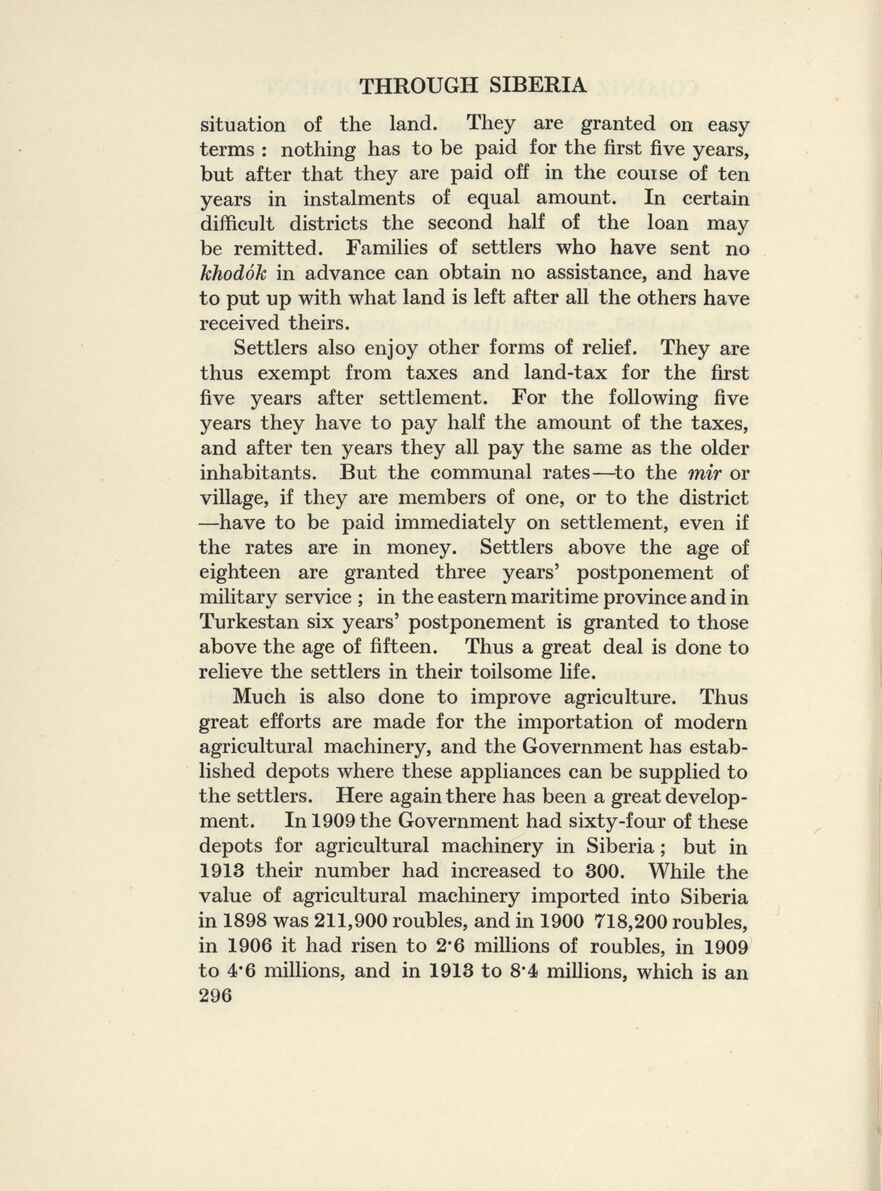
Full resolution (JPEG) - On this page / på denna sida - XIII. The colonization and development of Siberia

<< prev. page << föreg. sida << >> nästa sida >> next page >>
Below is the raw OCR text
from the above scanned image.
Do you see an error? Proofread the page now!
Här nedan syns maskintolkade texten från faksimilbilden ovan.
Ser du något fel? Korrekturläs sidan nu!
This page has never been proofread. / Denna sida har aldrig korrekturlästs.
THROUGH SIBERIA
situation of the land. They are granted on easy
terms : nothing has to be paid for the first five years,
but after that they are paid off in the couise of ten
years in instalments of equal amount. In certain
difficult districts the second half of the loan may
be remitted. Families of settlers who have sent no
khodok in advance can obtain no assistance, and have
to put up with what land is left after all the others have
received theirs.
Settlers also enjoy other forms of relief. They are
thus exempt from taxes and land-tax for the first
five years after settlement. For the following five
years they have to pay half the amount of the taxes,
and after ten years they all pay the same as the older
inhabitants. But the communal rates —to the mir or
village, if they are members of one, or to the district
—have to be paid immediately on settlement, even if
the rates are in money. Settlers above the age of
eighteen are granted three years’ postponement of
military service ; in the eastern maritime province and in
Turkestan six years’ postponement is granted to those
above the age of fifteen. Thus a great deal is done to
relieve the settlers in their toilsome life.
Much is also done to improve agriculture. Thus
great efforts are made for the importation of modern
agricultural machinery, and the Government has estab
lished depots where these appliances can be supplied to
the settlers. Here again there has been a great develop
ment. In 1909 the Government had sixty-four of these
depots for agricultural machinery in Siberia ; but in
1913 their number had increased to 300. While the
value of agricultural machinery imported into Siberia
in 1898 was 211,900 roubles, and in 1900 718,200 roubles,
in 1906 it had risen to 2*6 millions of roubles, in 1909
to 4*6 millions, and in 1913 to B*4 millions, which is an
296
<< prev. page << föreg. sida << >> nästa sida >> next page >>